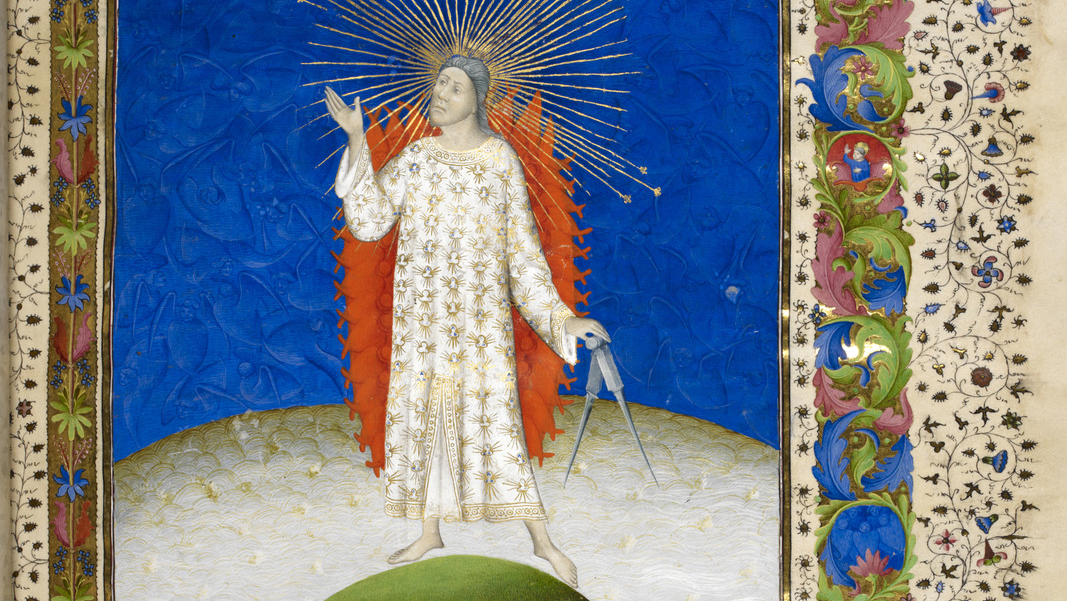Customized Bibles: The medieval world of the ‘Bible historiale’

When we pick up a book, we expect the story within to be the same in every copy, especially if that story is considered a sacred one.
But that wasn’t the case in the Middle Ages for readers of the Bible historiale, a French translation of the Bible that dates back to the 13th century. Each copy was customized to its aristocratic reader — and could leave out entire books or even include a kind of Biblical fan fiction.
The Bible historiale wasn’t the first or the only medieval translation of the Bible, but it was the most widely copied and used French translation for 200 years. In Making the Bible French: The Bible historiale and the Medieval Lay Reader, Binghamton University Associate Professor of French, Medieval Studies and Translation Studies Jeanette Patterson explored the book in its many iterations.
Often combined with other translations, the Bible historiale was written from 1291 to 1295 by Guyart des Moulins, a priest, canon and eventually dean of his collegial church in Aire-sur-la-Lys, in what is now northern France between Calais and Lille. Its practice of combining translations of the Latin Vulgate Bible alongside historical commentary from Peter Comestor’s schoolbook, known as the Historia Scholastica, inspired similar translations into English, German, Dutch and Romanian.
The French royal family was among the most prominent patrons of the Bible historiale, collecting manuscript copies in royal libraries; aristocrats in other French-speaking areas, such as the Netherlands and England, owned copies as well. By the end of the 15th century, the printing press expanded the reach of the Bible historiale, until Reformation-era translations began to compete with it.
“It was one of the most widely copied French texts, period, and was the first French-language Bible to be printed,” Patterson said.
While Latin was the common language of the church in medieval Western Europe, it was understood by only a small minority of literate clergy and other highly educated people. Vernacular languages such as French were used in both preaching and religious education for the benefit of laypeople, who wouldn’t understand much of the Bible or a Latin Mass without translation help, Patterson said.
Outside of the church, peasants and laborers typically couldn’t read in any language or afford books. However, plenty of lay aristocrats and some members of the middle class could read in vernacular languages, and the wealthiest among them were the main target audience for translations of the Bible.
Books were expensive and few; a majority of those produced were religious works, often considered family heirlooms by those who owned them. However, a rise in literacy among the aristocratic and professional classes drove the demand for vernacular books, including the Bible; commercial book workshops sprung up in Paris and other urban centers. Illustrated books were a hot new commodity and included picture Bibles, verse adaptations of Bible stories and more.
“While not true of all medieval vernacular Bibles, the Bible historiale mostly survives in deluxe manuscripts that would have been prohibitively expensive for all but the very rich,” Patterson said.
A different view of the Middle Ages
Patterson was first introduced to the Bible historiale as a graduate student, when she was assigned to work on a manuscript. Its sheer size was intimidating; Patterson described it, tongue-in-cheek, as a “giant, two-volume monstrosity” measuring 17.4 by 13 inches. At the time, she felt a little disappointed to be assigned to a translation, thinking that ited meant fastidious verse-by-verse comparisons with the Latin to find some obscure difference that would interest only the most dedicated scholars.
“I was so wrong! Studying that manuscript — and then many more manuscripts — of the Bible historiale completely upended a lot of my preconceived notions about the Middle Ages, about the social, cultural and literary functions of the Bible, and about translation,” she said.
She reviewed approximately 20 different versions of the Bible historiale during the course of her research. While she knew that each copy was different, she was astonish by just how different they were. They had different illustrations, included different books and glosses from other translations, and tailored both text and pictures for particular ends: as crusading propaganda, an encyclopedic universal history that foregrounds the French king’s place in the world, a commentary on the Hundred Years’ War, a handbook for ethical kingship or a holistic program for Bible study and private religious practice.
She also didn’t expect the translator to censor out most of the Book of Job, and later compilers to add a second, complete Book of Job from another translation — and choose to keep both. Some manuscripts even included medieval “fan fiction”: wildly imaginative apocryphal stories that the translator admitted were probably untrue but included anyway as enjoyable tales.
“The Bible historiale and its manuscript tradition show how the Bible could mean and do many different things, with each manuscript copy foregrounding different interpretations, uses and agendas,” Patterson said. “The translator and then later compilers, scribes and artists enact a two-century-long debate about what its target readers wanted and needed from a Bible and how best to communicate its most important lessons as they applied to lay readers in positions of worldly power.”
She hopes to instill in her readers the same sense of surprise and wonder she experienced when she first encountered the Bible historiale.
“The Bible in French was a living textual tradition whose many iterations give us a window into what medieval readers and rewriters wondered and cared about in the world they lived in and what they wanted the Bible to do for them,” she said.
